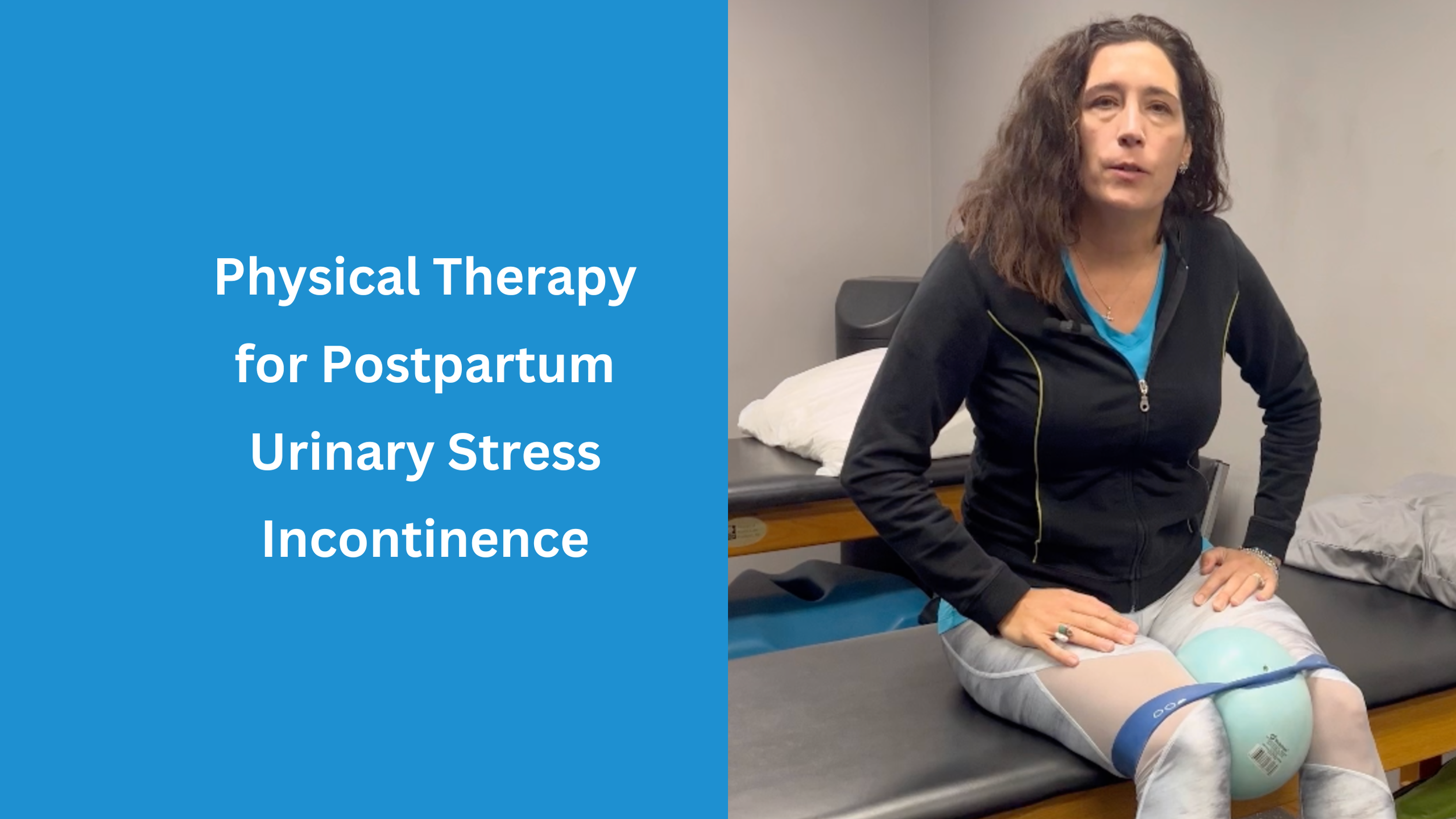Mangiarelli Rehabilitation Physical Therapy Blog
Physical Therapy for Perineal Tears
A perineal tear during childbirth is common during vaginal delivery, involving stretching or tearing of the perineum, the area between the vagina and anus. Perineal tears can lead to pelvic floor dysfunction, urinary or fecal incontinence, and painful sex. The risk of suffering a perineal tear is heightened if you are a first-time mom, had prolonged pushing during labor, delivered a large baby, used forceps during delivery, or if mom is of an older maternal age. Pelvic floor therapy with a physical therapist is one of the most effective and efficient ways to treat perineal pain after childbirth and restore function and strength to the pelvic floor muscles.
Physical Therapy for Postpartum Urinary Stress Incontinence
Mangiarelli Rehabilitation physical therapist Jen demonstrates three exercises you can do for urinary stress incontinence on the blog! Postpartum urinary stress incontinence occurs when an individual experiences involuntary urine leakage that happens during activities like coughing, sneezing, laughing, squatting, or impact movements following pregnancy and childbirth, often due to pelvic floor dysfunction. Approximately 34% of women experience urinary incontinence postpartum. Physical therapy has been shown to be 80% effective at treating urinary stress incontinence. Pelvic floor physical therapy is used to treat urinary incontinence, a program of functional retraining to improve pelvic floor muscle strength, endurance, power, and relaxation.
Physical Therapy after a C-Section [Infographic]
A C-section is major abdominal surgery involving the delivery of a baby through horizontal incisions made in the abdomen or uterus along the pubic hairline. Women can experience significant pain at the c-section incision site due to scar tissue formation, limiting mobility in the abdominal area and contributing to pelvic pain and pelvic floor dysfunction. After a c-section, physical therapy can play a critical role in helping women recover, reducing incision site pain, normalizing pelvic floor muscle tone, improving core and back muscle strength, and optimizing women’s function and mobility.
How Pelvic Floor Therapy Can Support Women with Endometriosis
March is National Endometriosis Awareness Month. Endometriosis is a condition that occurs when the endometrium grows outside of the uterus in the pelvic and abdominal areas, causing inflammation, pain, and adhesions in the pelvic area. Endometriosis can also cause muscles in the pelvis to tighten, spasm, and thicken as they respond to tension patterns from the condition, causing pelvic floor dysfunction. Pelvic floor therapy can help alleviate pelvic floor symptoms related to endometriosis, reducing endometriosis-related pelvic pain and pelvic floor muscle tightness, minimizing “endo belly” occurrence, addressing urinary and bowel issues, and helping make sex less painful through targeted reconditioning of the pelvic floor muscles.


![Physical Therapy after a C-Section [Infographic]](https://images.squarespace-cdn.com/content/v1/5e419cdc97af032560004b99/1684179845687-YIW6AAG3G4MSFF08KSB7/TW+C-Section+Infographic.png)












